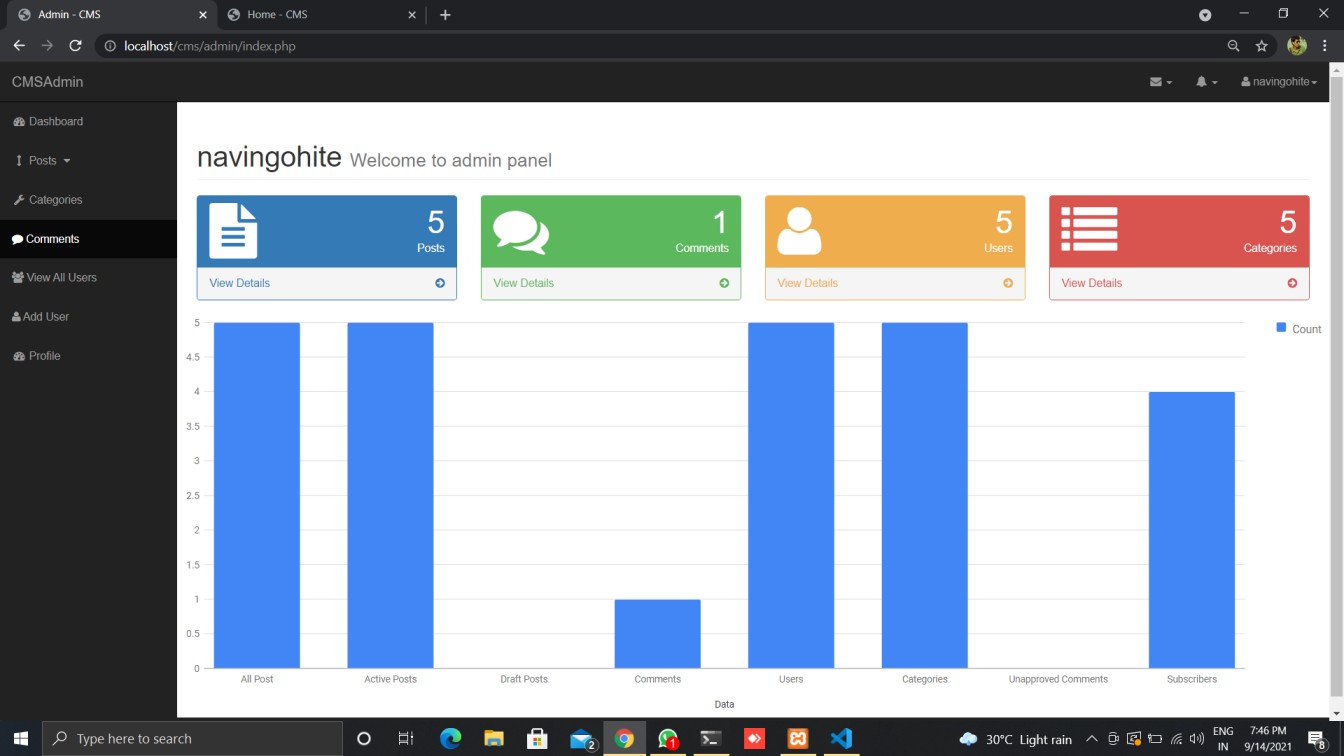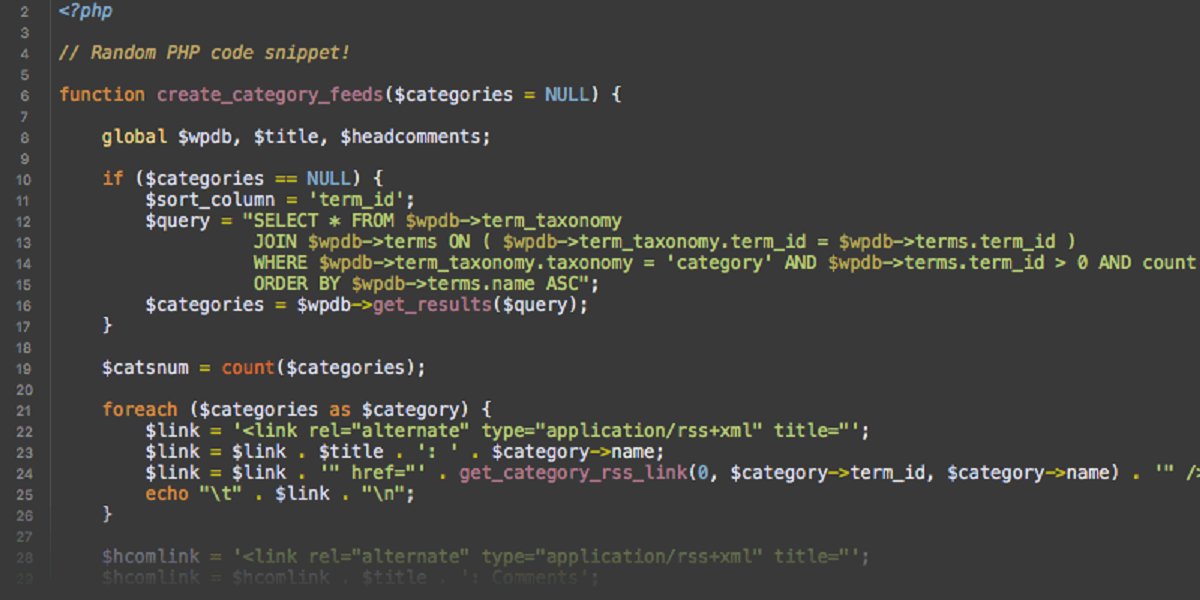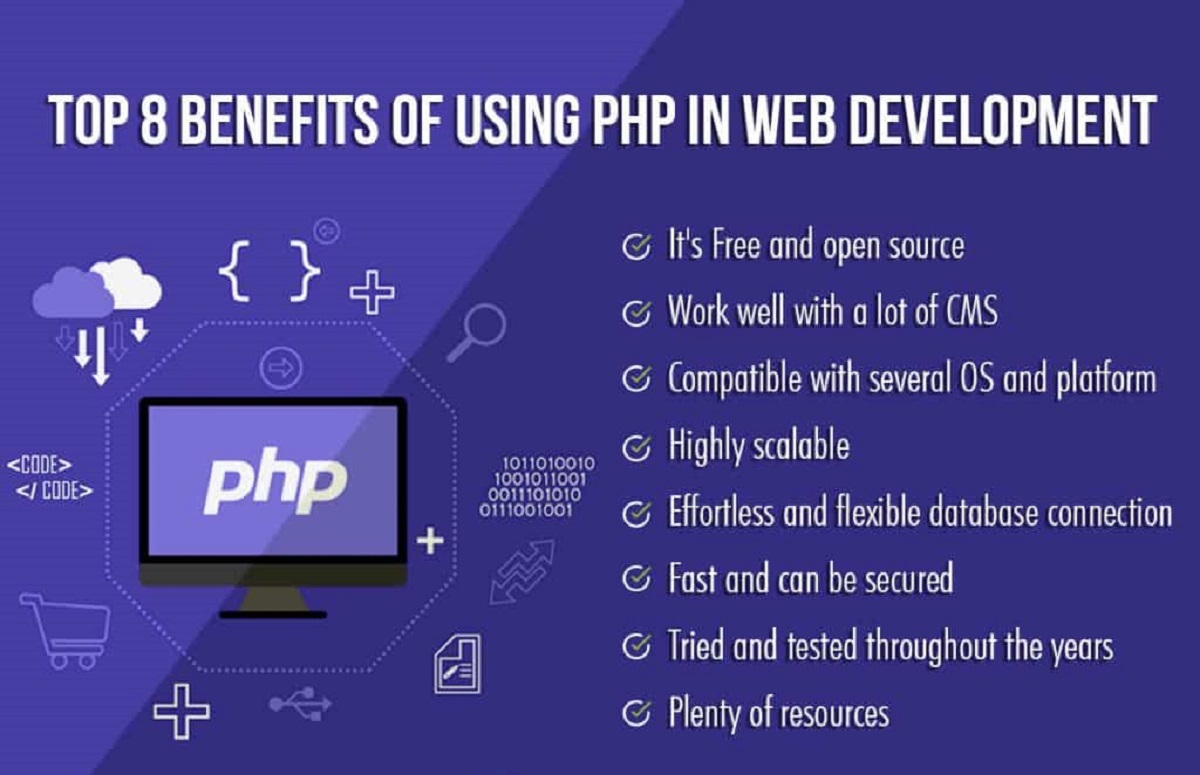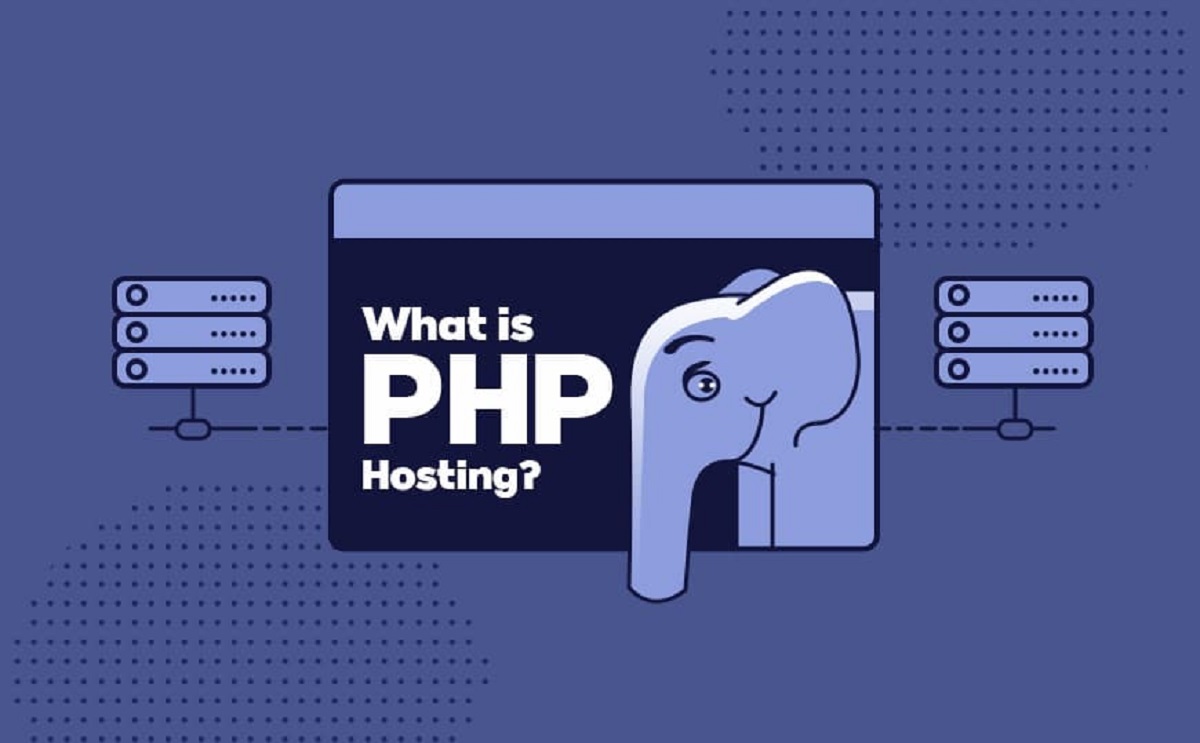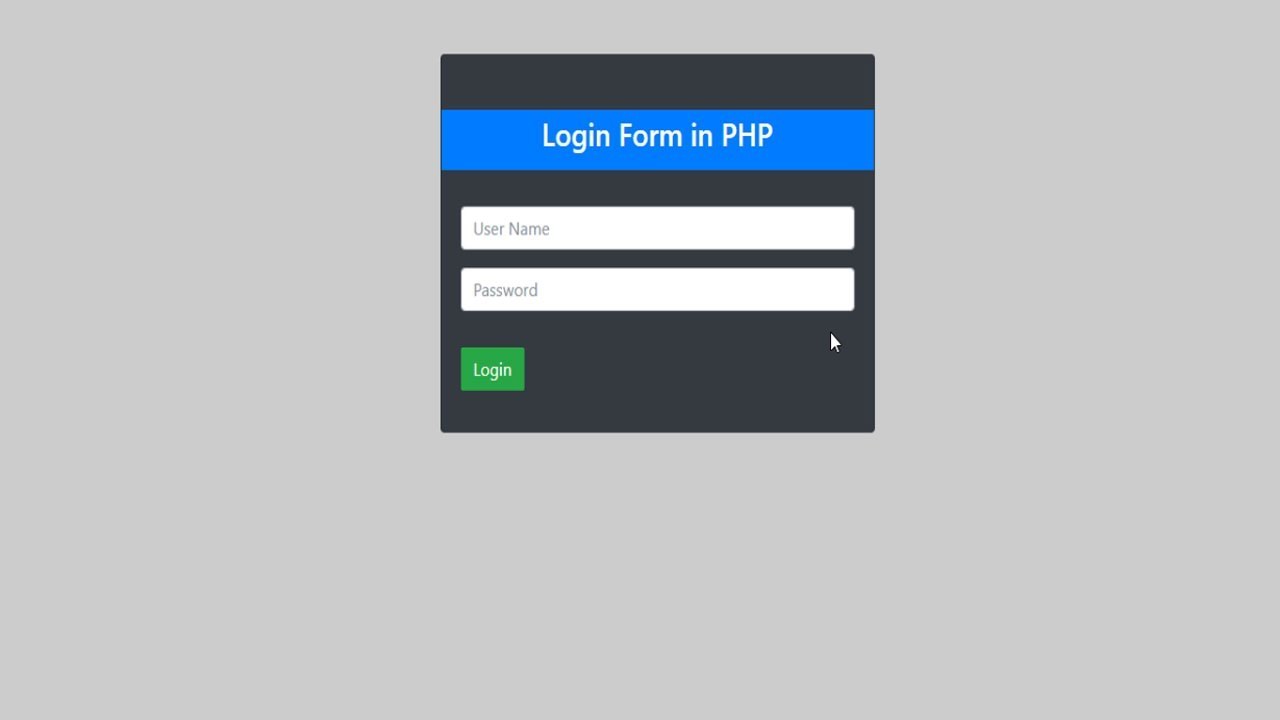Introduction
Welcome to the world of content management systems (CMS) in PHP! If you are wondering what a content management system is and how it can benefit you, you’ve come to the right place. Whether you are a blogger, an entrepreneur, or a web developer, understanding the basics of a CMS will help you create, manage, and update your website or blog with ease. In this article, we will delve into the concept of content management systems, explore their benefits, discuss popular CMS options in PHP, and provide insights into how they work.
A content management system is essentially a software application that enables you to create, modify, and organize digital content. It simplifies the process of website management, allowing you to focus on generating engaging content rather than dealing with complex technical aspects. With a CMS, you can easily add new pages, edit existing content, upload media files, and customize the layout and design of your website, all without the need for coding.
The advantages of using a content management system are multifold. First and foremost, it provides a user-friendly interface, making website management accessible to individuals with limited technical knowledge. You don’t need to be a web development expert to make updates or changes to your site. Additionally, a CMS allows for efficient collaboration, enabling multiple users to contribute and edit content simultaneously.
With a CMS, you can also ensure consistency across your website. By utilizing templates and predefined styles, you can maintain a cohesive look and feel throughout your web pages. Furthermore, content management systems often offer search engine optimization (SEO) capabilities, helping you improve your website’s visibility in search engine results.
PHP, one of the most popular programming languages for web development, offers a wide range of content management systems to choose from. Whether you are seeking a simple blogging platform or a comprehensive e-commerce solution, there is a PHP-based CMS tailored to your specific needs.
In the following sections, we will explore the features of content management systems, examine how they function, and provide guidance on selecting the right CMS for your requirements. By the end of this article, you will have a solid understanding of content management systems in PHP and be equipped to take your website or blog to the next level.
What Is a Content Management System?
A content management system (CMS) is a software application that allows you to create, manage, and organize digital content on your website without the need for extensive coding knowledge. It provides a user-friendly interface that simplifies the process of website management and enables individuals or teams to easily publish, edit, and update content.
At its core, a CMS consists of two main components: the content management application (CMA) and the content delivery application (CDA). The CMA is the backend interface that allows users to create, edit, and organize content, while the CDA is responsible for delivering the content to the website’s visitors. Together, these components provide a seamless process for content creation and publication.
One of the key advantages of using a CMS is that it eliminates the need to code from scratch. Instead of building each page individually, a CMS utilizes templates and themes that can be easily customized to match your desired look and feel. This flexibility allows you to quickly and efficiently create a professional-looking website without the need for extensive design or development skills.
A CMS also offers a variety of content types that can be managed, including text, images, videos, and documents. This allows you to create engaging and dynamic content that appeals to your audience. Furthermore, with a CMS, you can organize your content into categories, tags, and folders, making it easy for your visitors to navigate and find the information they are looking for.
Another benefit of using a CMS is the ability to collaborate and assign different roles and permissions to users. This means that multiple individuals or teams can work together on creating and editing content, ensuring that the website remains up-to-date and relevant. Additionally, a CMS often includes workflow management features, allowing for the seamless review and approval of content before it is published.
Furthermore, CMSs typically offer built-in SEO features and tools. This helps optimize your content for search engines, improving your website’s visibility and organic traffic. From customizable URLs to meta tags and keyword optimization, a CMS provides the necessary tools to enhance your website’s search engine ranking.
In summary, a content management system is a powerful tool that simplifies the process of creating, managing, and organizing content on your website. It eliminates the need for extensive coding knowledge and provides a user-friendly interface that allows for efficient collaboration and customization. With a CMS, you can create a professional-looking website, optimize your content for search engines, and deliver a seamless user experience to your visitors.
Benefits of Using a Content Management System
Using a content management system (CMS) offers numerous benefits for individuals and businesses of all sizes. Whether you are a blogger, small business owner, or large enterprise, utilizing a CMS can greatly enhance your website management and content creation process. Here are some of the key benefits of using a CMS:
- User-Friendly Interface: One of the primary advantages of a CMS is its user-friendly interface. You don’t need to be an expert coder or have technical knowledge to create and manage your website. CMS platforms provide intuitive interfaces that make it easy for users to create and update content, upload images and media, and customize the design of their site.
- Efficient Content Management: A CMS streamlines the content management process. With a centralized platform, you can easily create, edit, and delete content across your entire website. This saves you time and effort, allowing you to focus on generating high-quality content that engages your audience.
- Collaboration and Workflow: Content creation often involves collaboration. CMS platforms facilitate teamwork by allowing multiple users to access the system simultaneously. You can assign different roles and permissions to team members, ensuring that the right people have the ability to create and edit content. Workflow management features enable seamless content review, approval, and publication processes.
- Customization and Design: CMS platforms provide a range of templates, themes, and customization options to help you create a unique and visually appealing website. You can select a design that matches your brand identity and easily customize the layout, fonts, colors, and more. This allows you to create a professional-looking website without the need for extensive coding knowledge or hiring a web designer.
- SEO-Friendly Features: Search engine optimization (SEO) is crucial for enhancing your website’s visibility in search engine results. Most CMS platforms offer built-in SEO features, such as customizable URLs, meta tags, and keyword optimization tools. These help to improve your website’s search engine rankings, drive organic traffic, and increase your online presence.
- Content Organization and Navigation: CMS platforms provide tools for organizing your content effectively. You can categorize content, add tags, and create hierarchical structures to make it easier for visitors to navigate your website and find the information they are looking for. This enhances the overall user experience and encourages visitors to spend more time on your site.
- Scalability and Growth: A CMS allows your website to grow with your business. Whether you are starting with a small blog or expanding into an e-commerce site, a CMS provides the flexibility to add new pages, products, and features as your business evolves. This scalability ensures that your website can accommodate your changing needs.
Overall, using a content management system offers numerous benefits, ranging from ease of use and efficient content management to customization, SEO optimization, and scalability. By leveraging a CMS, you can create a professional and engaging website while saving time, increasing productivity, and enhancing the user experience for your visitors.
Popular Content Management Systems in PHP
PHP, being one of the most widely used programming languages for web development, offers a plethora of content management systems (CMS) to choose from. These CMS platforms provide a range of features and functionalities, making website creation and management efficient and flexible. Here are some of the popular content management systems in PHP:
- WordPress: Undoubtedly the most popular CMS in the world, WordPress powers millions of websites. It’s known for its user-friendly interface, extensive plugin library, and vast community support. WordPress provides a wide range of themes and plugins, making it highly customizable and suitable for various types of websites, from blogs and portfolios to e-commerce sites.
- Joomla: Joomla is another widely used PHP-based CMS that offers advanced features and robust capabilities. It provides a flexible and modular architecture, allowing users to create complex websites and applications. With a variety of templates and extensions, Joomla is suitable for a range of websites, including corporate portals, online magazines, and community-based platforms.
- Drupal: Drupal is a powerful open-source CMS that prioritizes scalability and security. It offers a highly flexible framework, enabling users to create and manage complex websites and applications. Drupal is known for its strong developer community and extensive libraries of modules. It is often chosen for large enterprise websites and government platforms.
- Magento: If you are looking to build an e-commerce website, Magento is a popular choice. It is a feature-rich CMS specifically designed for online stores. With its robust catalog management, secure payment gateway integration, and extensive customization options, Magento provides all the necessary tools to create a successful e-commerce site.
- Typo3: Typo3 is a content management system renowned for its enterprise-level capabilities. It offers a complex yet flexible architecture, making it ideal for managing large-scale websites and portals. Typo3 provides advanced multi-language support, powerful content editing features, and a wide range of extensions for additional functionality.
These are just a few examples of the popular content management systems available in PHP. Each CMS has its unique strengths and features, catering to different types of websites and user preferences. Whether you are a beginner or an experienced developer, there is a PHP CMS that suits your needs and goals. It’s essential to consider factors such as ease of use, scalability, available plugins and themes, and community support when selecting a CMS for your website.
By choosing the right CMS, you can streamline your website management process, create an engaging online presence, and provide a seamless user experience to your visitors.
Features of a Content Management System
A content management system (CMS) offers a wide range of features that simplify the process of creating, organizing, and managing digital content on your website. These features are designed to enhance usability, streamline workflows, and provide flexibility for customization. Here are some key features commonly found in content management systems:
- Content Creation and Editing: A CMS provides a user-friendly interface that allows you to create and edit content without the need for coding. You can easily format text, add images, embed videos, and customize the layout of your pages. This feature simplifies the process of publishing fresh and engaging content.
- Templates and Themes: CMS platforms offer a variety of pre-designed templates and themes that you can choose from. These templates provide a consistent look and feel throughout your website and can be customized to match your branding. It allows you to create a professional-looking website without the need for extensive design skills.
- Media Management: With a CMS, you can effortlessly manage media files such as images, videos, and documents. It provides features to organize and categorize your media library, making it easier to find and embed files within your content. Some CMS platforms even offer image editing capabilities and automatic resizing to optimize media files for web display.
- User Management: CMS platforms allow you to manage multiple users with different roles and permissions. This feature is particularly useful if you have a team working on your website. You can assign specific roles such as authors, editors, and administrators, and control their access and capabilities within the CMS.
- Search Engine Optimization (SEO) Tools: A CMS often provides built-in SEO features to improve your website’s visibility in search engine rankings. These features include the ability to customize meta tags, URLs, and header tags. Some CMS platforms also offer SEO analysis and suggestions to optimize your content for better search engine performance.
- Responsive Design: As an increasing number of internet users access websites through mobile devices, responsive design has become crucial. CMS platforms offer responsive design options and themes, ensuring that your website looks and functions well on various screen sizes and resolutions.
- Plugins and Extensions: CMS platforms have an extensive library of plugins and extensions that add additional functionality to your website. These plugins can range from social media integrations and contact forms to e-commerce capabilities and analytics tracking. It allows you to expand the capabilities of your website without the need for custom development.
- Workflow and Publishing: CMS platforms often include workflow management features that streamline the content creation and publishing process. You can set up approval workflows, establish content publishing schedules, and control the visibility of content based on user roles. This feature ensures that only approved and finalized content is published on your website.
These are just a few of the many features available in content management systems. The specific features and functionalities may vary from one CMS to another. When selecting a CMS, it’s essential to consider the features that align with your specific website needs, business goals, and technical capabilities.
By leveraging the features of a CMS, you can create and manage engaging content, customize your website’s design, improve SEO performance, and streamline workflows, ultimately providing an exceptional experience for your website visitors.
How Does a Content Management System in PHP Work?
A content management system (CMS) in PHP works by utilizing a combination of backend and frontend components to enable efficient content creation, management, and delivery. Here’s an overview of how a CMS in PHP operates:
Backend – Content Management Application (CMA): The backend of a CMS, also known as the Content Management Application (CMA), is where you, as the administrator or content creator, interact with the system. This is where you can create, edit, and organize your website’s content. The CMA typically provides a user-friendly interface with menus, forms, and tools to facilitate content creation and management.
Within the CMA, you can create and structure web pages, add and format text, insert media files, and customize the appearance of your website. This is usually done through a web-based interface that does not require coding knowledge. The CMA enables you to have full control over the content of your website without having to rely on a web developer for every update.
Database: The CMS in PHP utilizes a database to store all the content and related data. This includes information such as page content, media files, user accounts, and settings. PHP CMS platforms typically utilize MySQL or other popular database systems to efficiently store and retrieve data.
The database acts as the central repository for all content and provides a structured storage environment for efficient data management. Through the CMA, you can interact with the database to create, update, and retrieve content and other necessary information.
Frontend – Content Delivery Application (CDA): The frontend of a CMS, also known as the Content Delivery Application (CDA), is what visitors see when they access your website. It’s where the CMS delivers the content from the database and presents it in a user-friendly format. The CDA takes the content stored in the database and dynamically generates web pages in real-time.
The CDA processes user requests, retrieves the requested content from the database, and formats it according to the predefined templates and themes. This includes applying the layout, styling, and other design elements to create a visually appealing website. The CDA also handles dynamic elements such as navigation menus, search functionalities, and interaction with user-generated content.
PHP: PHP, being a server-side scripting language, plays a crucial role in the functioning of a CMS in PHP. It processes the user’s requests, retrieves the necessary information from the database, and dynamically generates the HTML pages that are sent to the user’s browser. PHP allows for dynamic content creation, easy database integration, and the execution of complex functionality, such as user authentication and form submissions.
This combination of the CMA, database, frontend, and PHP forms the foundation of how a CMS in PHP operates. It provides a seamless workflow for content creation, storage, retrieval, and delivery. The CMS enables you to focus on creating and managing your website’s content without the need for extensive coding knowledge or technical expertise.
By employing a CMS in PHP, you can efficiently manage your website’s content, update it in real-time, and deliver a visually appealing and interactive experience to your website visitors.
Choosing the Right Content Management System for Your Needs
Choosing the right content management system (CMS) is a crucial decision that can significantly impact the success of your website. With numerous CMS options available, it’s important to evaluate your specific needs and requirements to make an informed choice. Here are some factors to consider when selecting a CMS:
- Ease of Use: Look for a CMS that offers a user-friendly interface and intuitive navigation. Consider the level of technical expertise required to operate the CMS and whether it aligns with your skill set.
- Scalability and Flexibility: Consider the growth potential of your website and whether the CMS can accommodate your future needs. Look for a CMS that allows for easy scalability and offers flexibility in terms of design customization, plugin availability, and additional features.
- Content Management Features: Evaluate the specific content management features offered by each CMS. Consider factors such as the ability to create and organize content, media management capabilities, and options for workflow and collaboration.
- Design and Templates: Assess the design options and templates available within each CMS. Look for a CMS that offers a range of visually appealing and customizable templates that align with your brand identity.
- SEO Capabilities: Pay attention to the built-in SEO features of each CMS. Look for options to optimize meta tags, URLs, and header tags. Consider whether the CMS provides SEO analysis and suggestions to improve your website’s search engine visibility.
- Plugin or Extension Availability: Assess the availability of plugins or extensions within each CMS. Consider the specific functionalities and features you require, such as e-commerce, social media integration, analytics, or multilingual support. Ensure that the CMS has an active community that develops and maintains plugins.
- Community Support: Consider the strength and size of the CMS’s user community. Look for active forums, documentation, tutorials, and ongoing support from the CMS developers. A robust community ensures that you can find assistance and resources when needed.
- Budget: Evaluate the costs associated with each CMS. While some CMS platforms are open source and free to use, others may have licensing fees, hosting charges, or costs associated with premium themes or plugins.
By carefully considering these factors and weighing the pros and cons of each CMS, you can make an informed decision that aligns with your website goals and requirements. Additionally, it can be beneficial to take advantage of trial versions or demos of each CMS to gain a hands-on experience before committing.
Remember that the choice of a CMS should reflect your specific needs and preferences. What works for one website may not necessarily work for another. Take the time to assess your requirements and choose a CMS that provides the right balance of usability, scalability, features, and support to build a successful and engaging online presence.
Conclusion
Content management systems (CMS) in PHP offer a powerful and efficient solution for creating, managing, and organizing digital content on your website. Whether you are a blogger, a small business owner, or a large enterprise, utilizing a CMS can greatly simplify the website management and content creation process.
In this article, we explored the concept of content management systems, discussed their benefits, examined popular CMS options in PHP, explored their features, and delved into how they work. We learned that a CMS provides a user-friendly interface, allowing users to create, edit, and organize content without extensive coding knowledge. CMS platforms offer a range of features, including customizable templates, media management capabilities, SEO tools, and options for collaboration and workflow management.
When choosing a CMS, it’s important to assess factors such as ease of use, scalability, customization options, SEO capabilities, availability of plugins, and community support. Each CMS has its strengths and features that align with different website needs and goals. By selecting the right CMS, you can streamline your content management process, create an engaging online presence, and provide a seamless user experience to your visitors.
Keep in mind that selecting a CMS is just the beginning of your journey. Regular updates, security measures, and optimization efforts are essential to maintaining a successful website. Stay engaged with the CMS community, keep abreast of trends, and continuously evaluate and improve your website to ensure its long-term success.
Whether you are a beginner or an experienced web developer, a CMS in PHP provides you with the tools and functionalities to create a professional-looking website that meets your unique requirements. Embrace the power of content management systems and unleash your creativity to build an engaging online presence.







